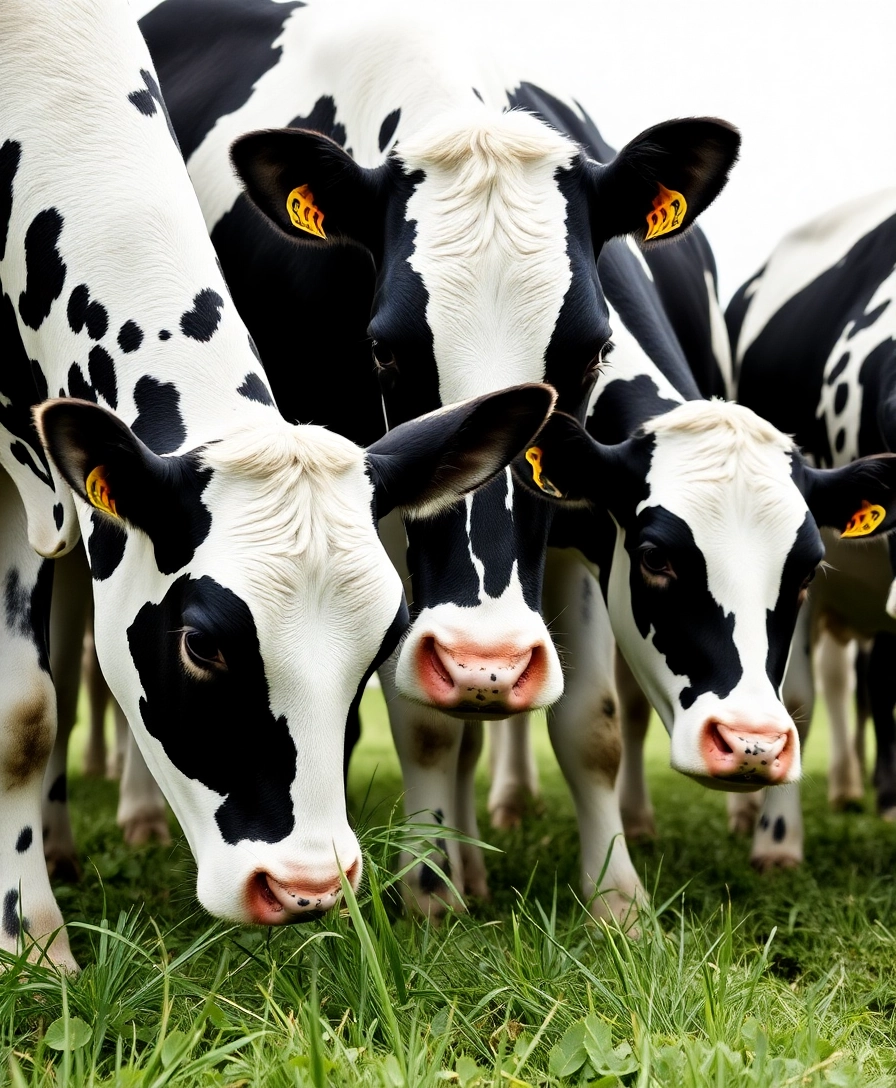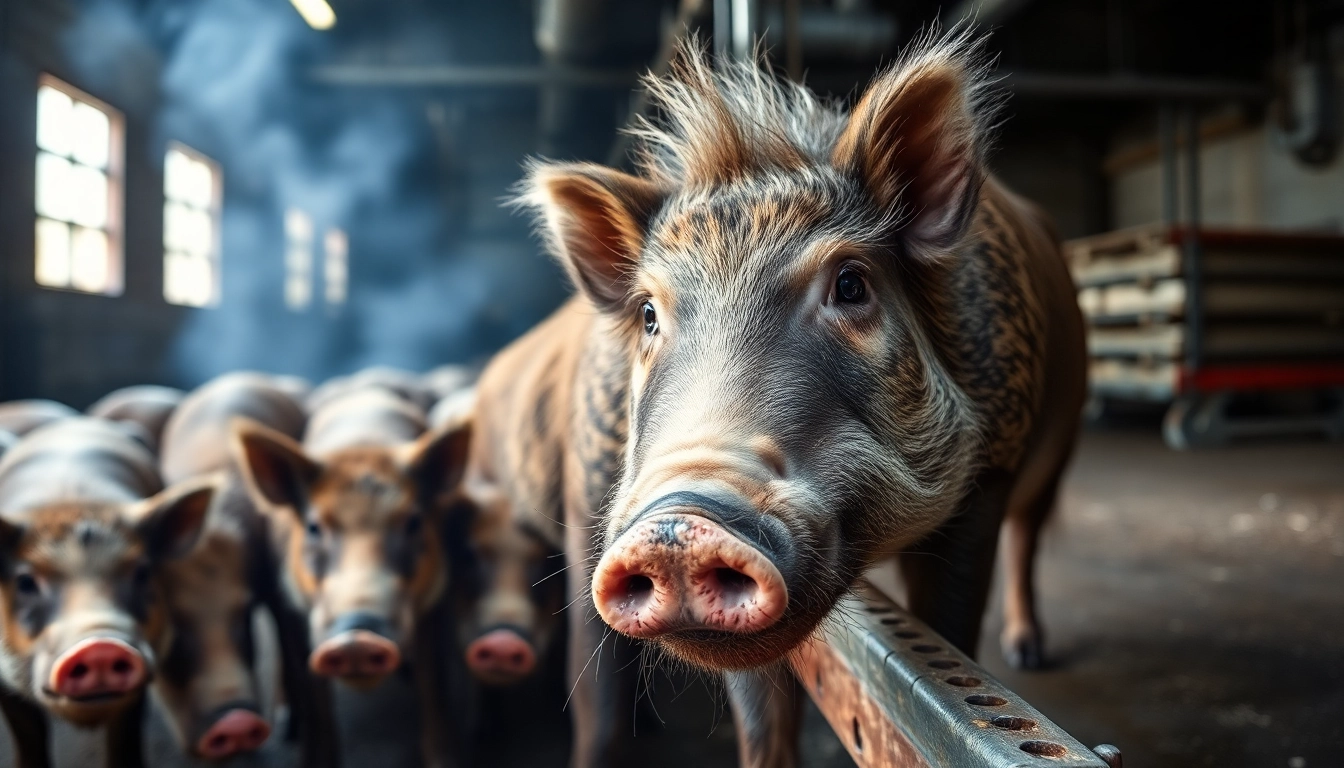-
Details
-
Written by: Dr. Correo Hofstad Ph.D.
-
Category: Guides
Ensuring Farm Resilience through Advanced Drainage Solutions
Flooding remains one of the most formidable challenges facing modern agriculture. Heavy rainfall, climate change, and improper drainage systems jeopardize crop yields, infrastructure, and overall farm productivity. Recognizing this pressing issue, the Agriculture Pathology Institute (API) has committed itself to providing comprehensive flood prevention products and services. Their approach centers on innovative drainage management, proactive monitoring, and community education via detailed flooding guides. Together, these measures aim to fortify farms against rising water threats, promoting sustainable agricultural practices in the face of changing environmental conditions.
The Institute's role extends beyond mere product supply; it operates as a knowledge hub equipped with scientifically backed drainage strategies. This article explores the multifaceted approaches API offers—from installing atrium grates to deploying advanced video surveillance for drainage systems—designed to prevent, detect, and respond swiftly to flooding problems. By understanding these tools and techniques, farmers can significantly improve their flood resilience and preserve crop health and farm infrastructure.
The Critical Role of Drainage in Modern Agriculture
Effective drainage forms the backbone of flood prevention efforts on farms. Properly designed and maintained drainage systems facilitate the quick removal of excess water, thereby minimizing waterlogging and preventing crop damage. The Agriculture Pathology Institute emphasizes that drainage should not be an afterthought but an integral part of farm infrastructure planning. It involves a combination of surface and subsurface techniques, including ditches, culverts, drains, and weirs, meticulously crafted to handle anticipated water volumes during heavy rainfall.
Implementing guides for building, maintaining, and improving drainage systems is fundamental. By employing a strategic approach—including selecting appropriate drainage components, such as atrium grates for all drains, and assembling low-grade weirs using large rocks—farmers can optimize flow capacity. These measures ensure that water is effectively diverted away without causing erosion or clogging the system. The Institute also advocates for the regular inspection and enhancement of drainage layouts to adapt to changing farm conditions and climate realities.
Atrium Grates and Weir Construction: Modern Techniques for Effective Drainage
Among the crucial drainage products recommended by API are atrium grates, which play a vital role in preventing debris from clogging drainage systems. These durable grates are engineered to withstand farm debris—such as crop stalks, leaves, and soil—and facilitate smooth water flow into the drainage infrastructure. Proper installation of atrium grates at all drains not only enhances system longevity but also reduces the frequency of blockages caused by organic and inorganic debris.
Furthermore, the Institute recommends constructing low-grade weirs using assembled large rocks as a cost-effective water control structure in agricultural ditches. Weirs help regulate water levels, prevent erosion, and manage runoff during intense storms. By harnessing these traditional yet adaptable techniques, farmers can precisely control water flow, thereby reducing flood risks. These physical structures, when combined with technological solutions, create an integrated flood mitigation system that is robust and reliable.
Harnessing Video Surveillance for Drainage System Monitoring
Modern technology has revolutionized flood prevention through the use of video surveillance systems. The Agriculture Pathology Institute promotes the deployment of surveillance cameras at critical drainage points—such as culverts, ditches, and tile outlets—to enable real-time visual monitoring of water flow and system health. These systems offer enormous benefits, allowing farmers to proactively identify and address issues before they escalate into catastrophic flooding events.
With high-resolution cameras providing live feeds accessible remotely via smartphones, tablets, or computers, farmers can now perform quick assessments of drainage conditions from anywhere. This capability is particularly vital during heavy storms, when rapid response is crucial. By visually confirming blockages, sediment buildup, or damage, farmers can deploy targeted interventions—such as clearing debris or adjusting water control structures—before floodwaters cause widespread damage. The integration of video surveillance with water-level sensors further enhances situational awareness, enabling a comprehensive, proactive flood management system.
Detecting and Preventing Organic Debris Blockages
Organic debris—such as crop residues, dead trees, and fallen leaves—remains one of the most common causes of drainage blockages and subsequent flooding. After harvest, plant stalks, roots, and leaves often wash into drainage structures and waterways, creating obstructions that critically impair water flow. Large amounts of debris can clog drainage tiles and ditches, resulting in localized flooding that hinders planting and harvesting operations.
Similarly, dead trees and forestry debris block waterways and culverts, causing water to back up and increasing erosion risks. Organic matter not only creates physical barriers but also accelerates the buildup of sediment, further reducing soil permeability and increasing flood susceptibility. The timely removal and management of crop debris and dead trees are essential—a proactive approach that includes regular inspection regimes, as recommended by API. Furthermore, understanding how organic matter interacts with drainage infrastructure helps farmers develop effective debris management plans that minimize flooding risks and maintain farm resilience.
Addressing Drainage Failures: Common Problems and Solutions
Despite the availability of advanced products and monitoring systems, drainage failures continue to pose significant risks. The most prevalent issues include root intrusion into drain tiles, sediment clogging, inadequate system design, and poor maintenance. Water-loving plant roots, such as those of willows and cottonwoods, tend to invade drainage pipes, leading to blockages that cause water to flood fields. To prevent this, farmers are advised to remove or regularly prune trees near drainage lines.
Meanwhile, sediment accumulation from soil erosion and improper system installation can lead to severe clogging. Small soil particles, particularly from sandy or silty soils, often infiltrate tiles and ditches, diminishing their capacity. Iron ochre, a slimy substance rich in iron oxide, can also precipitate within drain pipes, causing obstructions. To address these issues, the Institute recommends implementing regular cleaning schedules, utilizing sediment traps, and ensuring proper system design, including accurate pipe grading and sizing. These proactive measures help prevent system failure, ensuring consistent drainage performance even during extreme weather events.
Improving System Design: From Installation to Maintenance
The effectiveness of flood prevention hinges heavily on proper system design and installation. Critical factors include correct pipe grading, appropriate sizing of main and lateral drains, and adequate venting. Incorrect pipe grading, such as insufficient slope, hampers gravitational water flow, leading to pooling and potential flooding. Similarly, undersized mains can clog easily under heavy runoff scenarios.
Moreover, installation practices have a significant impact on long-term system performance. Poorly installed drain pipes—especially during wet conditions—can cause smearing, which reduces the permeability of the surrounding soil and hampers drainage. Therefore, farm operators should prioritize professional installation during suitable weather and conduct regular inspections to identify early signs of system degradation. Additionally, the use of vents or breathers enables air circulation within pipes, preventing blowouts and ensuring continuous, efficient water flow. These strategic design considerations ultimately reduce the likelihood of costly system failures and increase the farm's capacity to withstand flooding.
Soil and Surface Management: The Foundation of Effective Drainage
Soil health and surface management are fundamental to efficient drainage and flood prevention. Excessive soil compaction, caused by heavy machinery and overgrazing, restricts water infiltration, leading to surface runoff and an increased flood risk. Therefore, farmers must implement practices that minimize soil compaction, such as controlled traffic farming and reduced equipment passes during wet conditions.
Erosion represents another challenge, as it washes away fertile topsoil and deposits sediment into drainage channels. The resulting sediment buildup diminishes the capacity of natural and artificial drainage structures, making regular maintenance essential. Land shaping techniques, such as creating gentle slopes and designated surface inlets, can enhance surface drainage. These measures, combined with cover cropping and conservation tillage, help maintain permeable soils, reduce runoff, and support overall flood resilience. The Institute offers detailed guides on these practices, highlighting their crucial role in sustainable drainage management.
The Impact of Climate Change and Extreme Weather Events
Climate change has intensified the frequency and severity of extreme weather events, including heavy storms and rapid snowmelt, that significantly aggravate flooding in agriculture. These weather patterns overwhelm existing drainage systems, increasing runoff volumes that often exceed their design capacities. Consequently, farms located in floodplains, along rivers, or in areas with poor soil permeability are increasingly vulnerable.
The Institute emphasizes that adaptation strategies—such as elevating critical infrastructure, constructing new weirs, and upgrading drainage networks with modern materials—are crucial. Additionally, predictive tools, such as weather modeling and early warning systems integrated with video surveillance for drainage systems, enable farmers to prepare proactively. By understanding how climate change influences flood dynamics, farmers can implement smarter, more resilient drainage strategies that mitigate risks and safeguard their livelihoods for the future.
Community Collaboration and Educational Resources
Addressing flooding in agriculture is not solely an individual effort but a community-wide initiative. The Agriculture Pathology Institute recognizes the importance of collaborative efforts, including information sharing, training, and joint infrastructure projects. The Institute's comprehensive flooding guides serve as educational resources to help farmers understand the importance of proper drainage, removing organic debris, and maintaining their systems.
Furthermore, partnerships among local authorities, environmental agencies, and farming communities can facilitate the development of region-specific flood prevention plans. These collaborations often include investments in advanced drainage systems, the installation of atrium grates, and the deployment of video surveillance for drainage systems—empowering farmers with tools for early detection and rapid response. Ultimately, fostering a culture of proactive flood management ensures a resilient agricultural sector capable of adapting to climate adversities while maintaining productivity and sustainability.
The Agriculture Pathology Institute stands at the forefront of agricultural flood prevention, providing innovative products, detailed guides, and cutting-edge technology solutions. By integrating physical structures, such as weirs and atrium grates, with real-time video surveillance, farmers can effectively detect and respond to drainage issues before they escalate. Addressing debris management, system design flaws, and soil health further enhances these efforts. As climate change introduces new challenges, a combination of advanced infrastructure and community collaboration will be crucial in safeguarding farms from the devastating impacts of flooding. Through continuous innovation and education, the Institute empowers farmers to build resilient, flood-proof agricultural operations that can thrive amid environmental uncertainties.
References:
[1] Civil Eats, "As Extreme Weather Increases Flooding on Farms, Federal Support for Climate Resilience Evaporates"
[2] YouTube, "Flood Management Technologies in Agriculture"
[3] University of Connecticut Extension, "Flood & Food Safety Strategies"
[4] PBS Learning Media, "Flooding and Soil Erosion in Farming"
[5] Farm Progress, "Reducing Flood Risks on Your Farm"
[6] ACS Edu, "Farm Flooding and Management Solutions"
[7] Science Direct, "Heavy Rain and Soil Saturation"
[8] Cotterill Civils, "Impact of Flooding on Agricultural Drainage"
[9] USDA Climate Hubs, "Farming in Floodplains: Trade-Offs and Opportunities"













